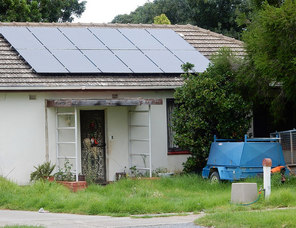|
So you have decided to add some solar panels to you home and you know you need to look at all your options to help you decide how big of a system you need. You are probably already familiar with a few of the different factors that must be considered before your first purchase.  Rooftop Solar Rooftop Solar
One factor that maybe doesn’t cross people's minds when they are considering solar power is how it can potentially be a money generating enterprise. But how can spending thousands of dollars on a solar system put that money and more back into your pocket? This is done through the the dual process of saving on utility bills and net metering electricity back to the utility company. What is Net Metering? Net metering is when you create more electricity than you use and that excess power is put back into the utility grid. What this does at least in 43 states and 4 US territories is potentially allows you to get paid by the utility company instead of you paying them. The rates at which you can get paid will vary from location to location but typically most places will compensate you at the wholesale rate that the utility company pays for electricity. This of course is less than they will be charging you for the electricity so this creates an imbalance between what you are paying and earning. You can get by this by reducing your use and by increasing the size of of your system to make up the difference. I can’t really provide a good example of potential earnings since they are so dependent on local factors but you can with a little digging figure out what size of a system you need to generate a profit. For more information check out the sources below and other articles here on Green Living Library. Sources: http://www.seia.org/policy/distributed-solar/net-metering http://www.eei.org/issuesandpolicy/generation/NetMetering/Documents/Straight%20Talk%20About%20Net%20Metering.pdf https://www.eia.gov/tools/faqs/faq.php?id=97&t=3
0 Comments
Leave a Reply. |
AuthorHello my name is Josh Larson and I am the creator of the Green Living Library. Here on the blog you will find updates to content found in the Green Living Library as well as stories from those living the sustainable life already. Archives
December 2021
Categories
All
|